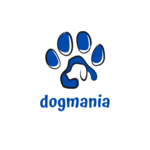As pet owners become increasingly conscientious about their furry friends' health, grain-free dog food has emerged as a popular dietary choice. This comprehensive guide explores the benefits, considerations, and best practices for choosing grain-free dog food in 2024.
Understanding Grain-Free Dog Food
Grain-free dog food excludes common grains such as wheat, corn, and rice, which are often used as fillers in traditional dog foods. Instead, it relies on alternative sources of carbohydrates, like potatoes, peas, and legumes. The primary aim is to provide a diet closer to what canines would eat in the wild, focusing on high-quality proteins and vegetables.
Benefits of Grain-Free Dog Food
1. Improved Digestion: Dogs can have difficulty digesting grains, leading to gastrointestinal issues. Grain-free diets often result in fewer digestive problems and firmer stools.
2. Allergy Relief: Many dogs are allergic to grains, causing skin irritations and other health issues. A grain-free diet can alleviate these symptoms, leading to healthier skin and a shinier coat.
3. Higher Protein Content: Grain-free dog foods typically contain more meat, providing essential proteins that support muscle development and overall health.
4. Weight Management: By avoiding high-carb fillers, grain-free diets can help maintain a healthy weight, reducing the risk of obesity-related conditions.
Is Grain-Free Right for Your Dog?
Before switching to a grain-free diet, it's crucial to consult your veterinarian. They can provide personalized advice based on your dog’s specific health needs and ensure the new diet is nutritionally balanced.
If your dog exhibits symptoms like itching, digestive distress, or chronic ear infections, they might benefit from a grain-free diet. However, it's essential to monitor their response to ensure they don't develop sensitivities to other ingredients in the new food.
Choosing the Best Grain-Free Dog Food
Read the Labels
Understanding the ingredients list is crucial. Look for high-quality proteins as the primary ingredient, such as chicken, beef, or fish. Avoid products with excessive fillers, artificial preservatives, and by-products.
Consider Your Dog's Life Stage
Puppies, adults, and senior dogs have different nutritional requirements. Ensure the grain-free food you choose is appropriate for your dog's age, size, and activity level.
Look for Complete and Balanced Formulas
Ensure the grain-free dog food is labeled as “complete and balanced” by AAFCO (Association of American Feed Control Officials). This certification guarantees that the food meets the necessary nutritional standards.
Top Grain-Free Dog Foods in 2024
1. Taste of the Wild High Prairie
This highly-rated brand features real roasted meats, including bison and venison, along with nutrient-rich fruits and vegetables. It’s formulated for optimal digestibility and overall health.
2. Blue Buffalo Wilderness
Inspired by the diet of wolves, Blue Buffalo Wilderness offers high-protein recipes with deboned chicken, turkey, or salmon as the first ingredient. It also includes LifeSource Bits, a precise blend of antioxidants, vitamins, and minerals.
3. Merrick Grain-Free Texas Beef & Sweet Potato
Merrick’s grain-free options are crafted with real deboned beef, sweet potatoes, peas, and apples. It’s designed to provide complete and balanced nutrition with a focus on high-quality ingredients.
4. Wellness Core Grain-Free
This brand emphasizes natural, grain-free ingredients with high protein levels and added probiotics for digestive health. Wellness Core offers a variety of recipes tailored to different life stages and dietary needs.
Transitioning to Grain-Free Dog Food
Gradual Introduction
Sudden changes to your dog’s diet can cause digestive upset. Transition gradually by mixing the new grain-free food with the current food, increasing the proportion of grain-free over a week or two.
Monitor Your Dog's Response
Keep an eye on your dog's behavior, coat condition, and stool quality during the transition. If you notice any adverse reactions, consult your veterinarian promptly.
Hydration
Ensure your dog stays well-hydrated, especially if the new diet is higher in protein. Fresh water should always be available.
Addressing Common Concerns
A well-formulated grain-free diet can provide all the necessary nutrients. However, it’s essential to ensure that the food includes a balanced mix of proteins, fats, vitamins, and minerals.
In recent years, the FDA has investigated potential links between grain-free diets and canine dilated cardiomyopathy (DCM). While no definitive conclusions have been reached, it's essential to stay informed and consult your veterinarian regarding any concerns.
Grain-free dog foods can be more expensive than traditional options. To manage costs, consider buying in bulk, looking for deals, or choosing store brands that meet high nutritional standards.
Conclusion
Grain-free dog food can offer numerous health benefits, from improved digestion to enhanced coat quality. However, it’s vital to make an informed decision based on your dog’s unique needs and consult with your veterinarian. By carefully selecting high-quality, nutritionally balanced grain-free food, you can support your dog’s overall health and well-being in 2024 and beyond.
Embrace this dietary change with confidence, knowing that you’re making a choice that can contribute to a healthier, happier life for your beloved pet.



leave me your thoughts here